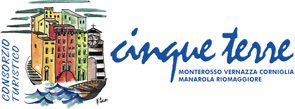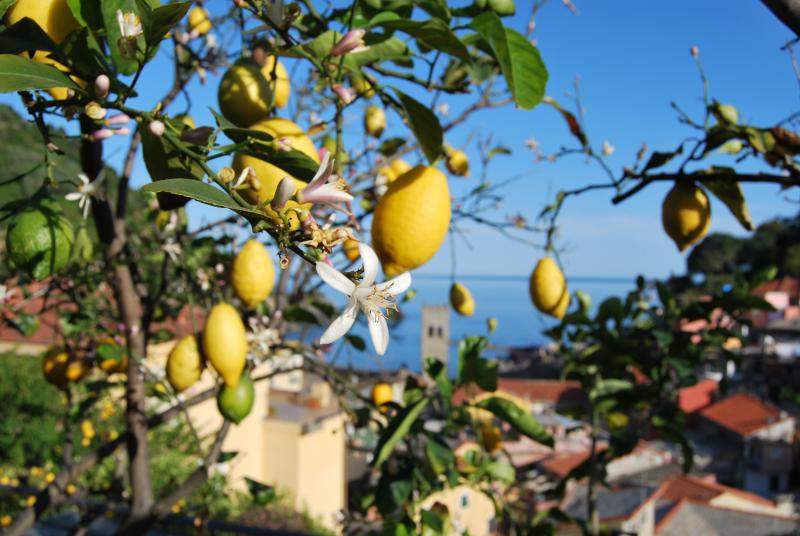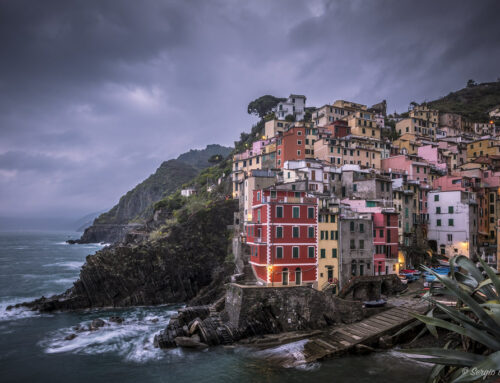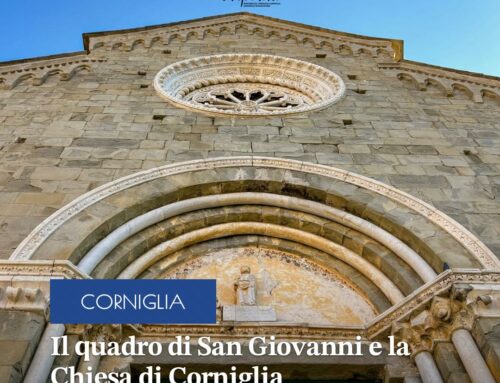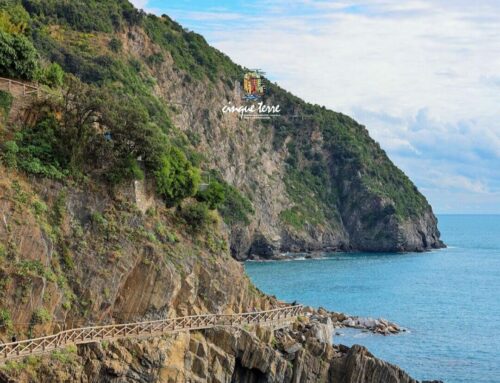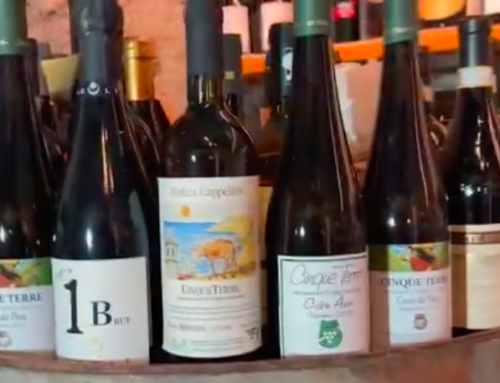The lemon – the golden fruit
The lemon (Citrus×limon) is a fruit tree within the genus Citrus of the Rutaceae family. Although some genetic studies indicate that the lemon is an ancient hybrid, probably between bitter orange and citron, for centuries it has been an autonomous species propagated by grafting or budding. While the exact origin of this extraordinary fruit is lost in the mists of time, it unquestionably originated in Asia and has been grown in China for thousands of years.
The name “lemon” is believed to come from the Persian “līmū”, an all-encompassing term for citrus fruit, and no doubt the early references to it in Greek and Roman mythology stem from Persian lore. The lemon first appeared in literature in 10th-century Arabic documents referring to the tree being used for ornamental purposes. It was subsequently introduced into Sicily after the 10th century and later to Genoa and Amalfi in the mid-15th century during the flourishing seaborne trade in the heyday of the Maritime Republics, and lemon seeds were transported by sea to the Caribbean island of Hispaniola by Columbus.
THE LEMON TODAY
The lemon is now grown all over the world in regions whose mild climate suits this evergreen. Of the lemon’s many varieties the Sicilian femminello and Amalfi Sfusato thrive in their respective breathtaking natural Italian habitats. The more recent varieties of lemon are characterized by their tart juicy flesh and pungent aromatic rind, while the trees tend to bloom generously and bear fruit almost all year round.
THE LEMON AND OTHER CITRUS FRUIT
Despite its similarity to the lemon, the citron (Citrus medica) is a species in its own right and indeed one of the four original species from which today’s various hybrids originated. A peculiar variety of citron known by its Middle Eastern name ethrog and used in Palestine for the Feast of Tabernacles is a giant compared to other varieties: a single fruit can weight several kilos and all of it – flesh, rind and albedo – is sweeter and juicier.
The fruit of Citrus × myrtifolia is commonly known as chinotto, perhaps due to its probable origin in China. While there are no accurate records, the tree is believed to have been imported from China in the late 16th or early 17th century to Savona in north-west Italy.
The Bergamot orange (Citrus × bergamia).
One legend has it that the bergamot originated in the Canary Isles, from where Columbus brought it to Europe. Other sources claim its birthplace in China, Greece or the Spanish city of Berga. Another story tells of a Moor of Spain who sold a branch for 18 escudos to Messrs. Valentino from Reggio in the southern Italian region of Calabria, following which the branch was grafted onto a bitter orange rootstock in land they owned in the Reggio Calabria neighbourhood of Santa Caterina.
Myths, origins and history
The Hanging Gardens of Babylon must surely have housed splendid lemon trees apparently carried there from far-off India, where they grew wild on the rugged slopes of the Himalayas. Instead, Theophrastus of Eresos, the Greek father of botany of the 4th-to-3rd centuries BC described the lemon as the apple from Media, resulting in one of the first botanical names for the lemon being Citrus medica, meaning “coming from Media”.
According to Greek and Roman mythology, citrus fruits were the dowry of Hera (Juno), the bride of Zeus (Jupiter), who kept them jealously hidden away in a blissful garden situated at the western end of the earth, where the sun dies every day and where lived the Hesperides. Each of the three nymphs guarded her own fruit: Aigle tended the citron, Arethusa the lemon and Hesperethusa the orange, thus the Hesperides were the nymphs guarding the “golden apples” which Hercules in his eleventh labour stole from the garden and gave to mankind.
The Ancient Romans had great regard for the lemon both due to its many properties and as an ornamental plant often grown in their splendid gardens. The “House of the Orchard” in Pompei’s archeological site has frescoes clearly depicting the lemon among its many trees.
Monterosso and its lemons
Monterosso boasts a centuries-old tradition of lemon growing and today still maintains its record as the village of the Cinque Terre Natural Park with the greatest number of acres of land cultivated as lemon groves.
Sadly, as times change these no longer enjoy the leading role they shared along with fishing and viticulture from the 17th century onward as a cultural mainstay of Monterosso. Their former glory was described by Matteo Vinzoni in 1700 when he referred to “the wonderful citrus groves”, and it is typical of this rugged coastline’s horticulture that every nook and cranny of land was put to use, although the locals tried to keep their lemon trees down in the valleys where there was plenty of water and less wind. While lemon groves are still found all around the edges of the village, the places where history and nature mingle are undoubtedly the neighbourhoods of Buranco and Morione with their magnificent lemon houses. The footpaths and mule trails all around the village including Fegina inspired the Nobel prize winner Eugenio Montale’s poem “The Lemon Trees”. This precious fruit is celebrated every spring with Monterosso’s Lemon Festival known as Sagra dei Limoni.
THE NOBEL AWARD-WINNING LEMON TREES
Eastern Liguria, the land where I spent part of my early years, has this gaunt, rough, shocking beauty” (On Poetry, p. 88)
In his early years the future poet Montale used to spend his summer holidays in Monterosso, where his family owned a fine villa overlooking the sea, which he immortalized as the “house with two palm trees”.
The wild arid features of the Ligurian coastline were to become the distinct image of his first poetry collection, Cuttlefish Bones. His literary manifesto The Lemon Trees stands out amid gems such as Meriggiare (To Rest in the Shade/Sit the Noon Out) and L’agave sullo scoglio (Agave on the Cliff), and this collection would later contribute to his being awarded the 1975 Nobel Prize in Literature.
I prefer small streets that falter
into grassy ditches where a boy,
searching in the sinking puddles,
might capture a struggling eel.
The little path that winds down
along the slope plunges through cane-tufts
and opens suddenly into the orchard
among the moss-green trunks
of the lemon trees.
……
Even the poor
know that richness,
the fragrance of the lemon trees
Discovering Buranco
This itinerary goes from the oldest part of the village of Monterosso down to the seafront. Walkers should start off in the historical centre and head towards via Buranco through an ancient arcade dating back a thousand years. As one leaves the village there unfolds the admirable terracing first recorded on maps from the Republic of Genoa. Highlights of the walk include the 18th-century artificial paving over the Buranco stream to create a lemon orchard. A walk up towards the Cemetery reveals the remains of the ancient Castrum Obertengo and leads one down again towards the convent of the Capuchin friars (Convento dei Cappuccini) and on to the San Francesco area where one can almost hear the echoes of Montale’s most famous works.
Walking around Morione
Visitors to this valley which unfolds to the left on leaving the village of Monterosso suddenly find themselves in the past as they wander between bridges and walls mostly built over 300 years ago. Up the slopes one finds splendid lemon groves along with lush vegetation featuring some flora characteristic of the entire Riviera such as the yellow iris, Cladium mariscus, and further up a wood of mixed native and alien cork trees (Quercus suber).
The last part of a steep path climbing up from the valley to the former hermitage of Santa Maria Maddalena winds almost entirely through a fascinating mixed wood where cork oaks may again be seen. At the top of this hill stand the remains of the church of S. Lorenzo al Terriccio, which was first referred to in 1244 and which was re-named for the Magdalen in 1428.
Limoncino
Also known as limoncello, limoncino is a semi-sweet liqueur made by steeping lemon zest in rectified spirit and then diluting the mix in a sugar and water syrup. Once the concoction has been filtered, the liqueur’s yellow hue varies in intensity according to the recipe used. The secret to a successful limoncello is choosing the right lemons, which should be medium-to-large with a symmetrical elongated shape, picked by hand between February and October.
Anchovies marinated in lemon juice
Gut the anchovies, remove the heads, backbone and tails. Rinse under running water and place in a container. Cover with lemon juice and place in refrigerator for 4-5 hours. When cured, drain the anchovies, lay them neatly on a serving dish and season with oregano, shredded fresh basil, salt and olive oil. Serve cold.
